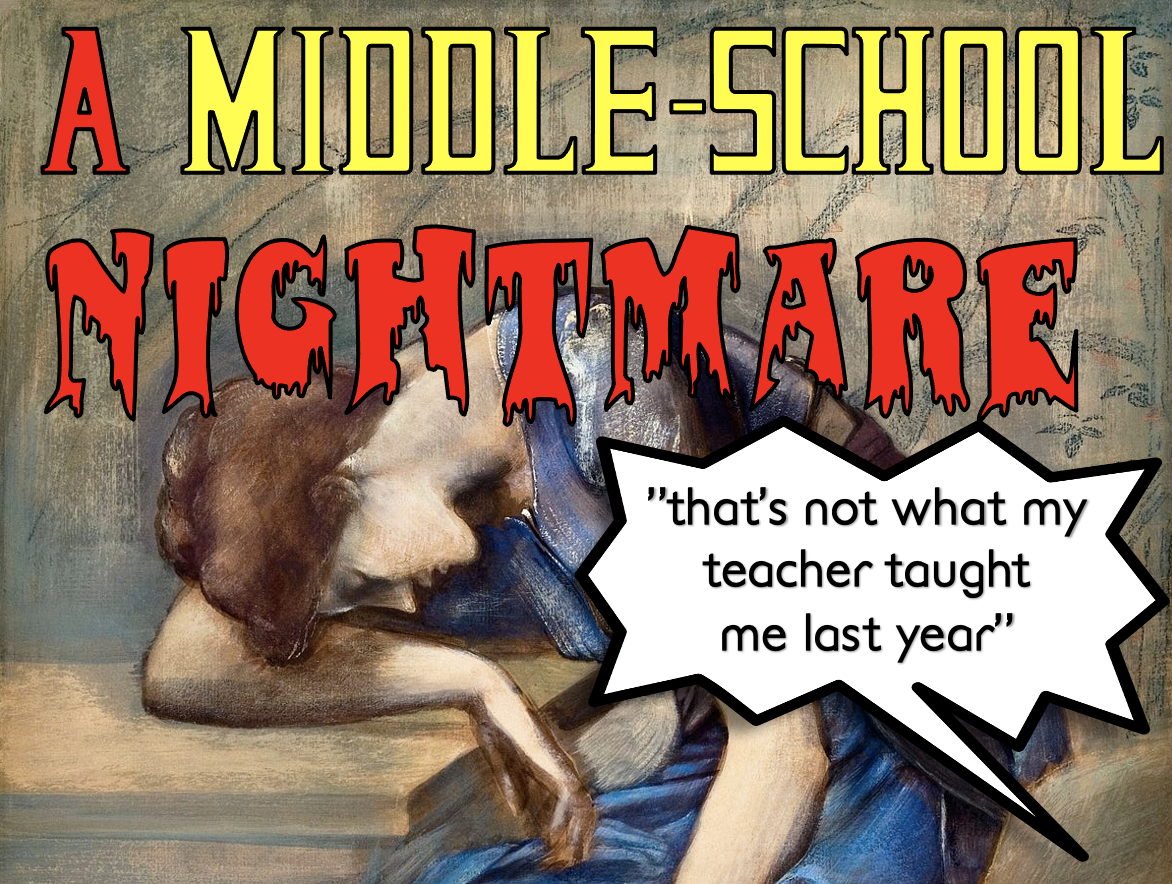“Well my teacher last year said…”
The Middle School nightmare
We've been talking to middle school teachers on social media and their responses have been loud and clear. Elementary teachers are letting them down.
The topic of how math is taught in schools can easily ruffle feathers. While this conversation often feels divisive, it's a vital one. After all, we're talking about the foundational skills that could potentially set the trajectory for a child's lifelong relationship with math and critical thinking. The dialogue often circles back to elementary school teachers, sometimes in a less-than-flattering light.
"Elementary Teachers have dropped the ball"
One frustrated teacher exclaimed:
"I have been fighting this battle for over 20 years!"
Another teacher joined in:
"I get frustrated when students do the 'butterfly' method."
These sentiments reflect the frustration of middle and high school teachers who find themselves re-teaching math concepts that were ostensibly covered in the earlier grades. Comments like, "They're teaching them shortcuts that mimic mastery but don’t get at true understanding," shed light on the complexity and potential pitfalls of math education in elementary settings.
Re-thinking the Narrative
However, as we go along this line of criticism, it's crucial to shift gears and think about the challenges that elementary teachers face. Elementary teachers are not a singular group and there are highly competent math teachers amongst the throng. As for those who are not as mathematically inclined, one comment puts it succinctly:
"Most K-5 teachers are more reading focused and not math people themselves."
Elementary educators are tasked with teaching all subjects, often with limited resources and time. Many elementary school teachers don't have specialized math degrees, yet they are still expected to lay the foundation for subjects like fractions, decimals, and basic algebra.
And then there's the issue of developmental readiness. As one educator noted:
"Concepts are taught differently at different levels due to cognitive readiness, ability, and maturity."
What works for a third-grader mentally and emotionally might not work for a seventh-grader, and vice versa.
What do the experts say?
Dr. Rebecca Harris, a mathematician and author of several papers on mathematics education, is critical of elementary-level teaching methods. She states,
"Elementary teachers often resort to rote learning techniques because they themselves may not have a deep understanding of mathematical concepts. This can result in 'mathematical anxiety' in students, which becomes a barrier to learning as they progress to higher grades."
On the flip side, Dr. Emily Chen, an educational psychologist specializing in early childhood education, has a different take sighting that elementary school teachers are the unsung heroes:
"..,they introduce children to a variety of subjects, often without adequate resources. When it comes to math, they lay the foundation for conceptual understanding, instilling a sense of curiosity and excitement about the subject. Their holistic approach nurtures not just cognitive skills, but also emotional and social intelligence."
Both perspectives shed light on the challenges and contributions of elementary school teachers, emphasizing their integral role in shaping the trajectory of math education. Dr. Chen's viewpoint, in particular, highlights the often unacknowledged but significant efforts teachers make in nurturing well-rounded students. These teachers do more than teach math; they help children navigate the complexities of social interactions, emotional regulation, and even cultivate a love for learning. Their role is multifaceted and extends far beyond what test scores can measure, serving as foundational blocks for a child's entire educational journey.
The True Culprits
Elementary teachers shouldn't shoulder all the blame if any at all! There's an entire educational system in the backdrop, rife with budget cuts, lackluster textbooks, and, at times, poor vertical and horizontal alignment between different grade levels.
"I wish all of our districts had funding to provide math specialists at the elementary level,"
a comment reads, underscoring the resource strain that schools face. Another comment calls out,
"lazy publishers who continue to publish crap,"
suggesting that the problem could be higher up the ladder.
Concluding Thoughts
Rather than casting blame, it might be more productive to consider solutions that support both elementary and secondary educators. Effective vertical alignment between grade levels, ongoing teacher training, and reliable resources could go a long way in mitigating these issues. Instead of getting caught up in a blame game, perhaps we should focus on the end goal: providing a strong, coherent math education for students at all levels.
Ultimately, it's about creating a culture of continuous improvement in education, where elementary teachers are supported rather than criticized, and secondary teachers can build on a strong foundation rather than remediate. Only through a collaborative effort can we bridge the educational gaps that are all too apparent in today's classrooms.
Have your say! Add your comments below to continue this important conversation



Comments ()